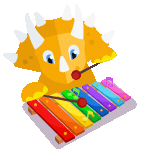Creole Isn’t Broken French—Here’s Why It’s Special
Many people assume Haitian Creole is just a version of French but it’s actually a full, living language with its own sounds, grammar, and spirit. For kids learning Creole, it’s important to know: this language is all its own!
What Makes Creole Different from French?
While Haitian Creole developed from French roots during colonial times, it grew into something unique. Creole has simpler grammar, a different sound system, and lots of influences from African languages, Spanish, and Taino words.
For example:
- Li ale – He/She goes (Creole)
- Il va – He goes (French)
Both mean the same thing, but they sound and look different!
Why It’s a Beautiful First Language
Haitian Creole is spoken by nearly all Haitians. It’s how families talk at home, sing songs, and tell stories. It reflects identity, pride, and joy—and it’s easy for kids to speak clearly and confidently.
With Dinolingo, young learners (ages 2–14) can hear native Creole speakers in engaging videos, sing along with upbeat songs, and play games that teach vocabulary naturally.
The course works on web browsers, iOS, and Android and includes printable worksheets to keep learning screen-free when needed.
Creative Activities to Try
French vs. Creole Match-Up
Write simple phrases in French and Creole on separate cards. Mix and match them to see the differences.
Creole Storytime
Have kids listen to or create a short story using Creole words they know like “zanmi” (friend) or “lakay” (home).
Creole is not a shortcut to French it’s a full and special language that celebrates culture, creativity, and connection.
Source:
Start Learning a New Language Today!
Best Language App for Kids.
7-day free trial. Then only $19/month. Cancel anytime.
